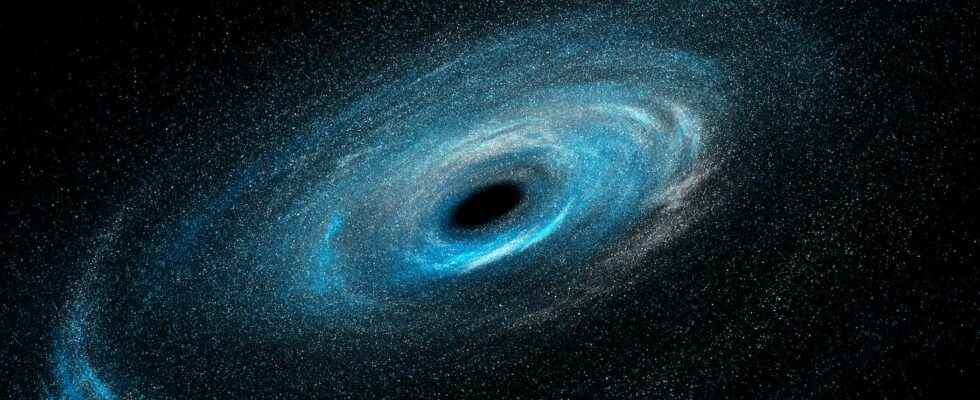“In space, no one will hear you scream. » All who have seen Alien, know it. Because in the vacuum of space, no sound can propagate. In the void. But in a cluster of galaxies surrounded by gas, it’s something else. And NASA researchers are now offering us something incredible. Let us hear… the song of a black hole!
The Perseus cluster is a cluster of galaxies located some 250 million light-years from Earth. It includes nearly 200 galaxies. And at its center is a black hole. In 2003, researchers from the Nasa discovered that the waves emitted by this black hole cause ripples in the gas cluster hot. Ripples they had translated into a musical note. A note, however, inaudible to thehuman ear since about 57 octaves below middle C.
Today the astronomers present what one might call a new sonification of what black hole. Even if this time, they wanted to revisit the sound waves real findings in space x-ray observatory data Chandra. What ? Real sound waves? But don’t we say that there is no sound in space ?
Sounds from other black holes
This is true when the considered space is empty. But a cluster of galaxies contains hundreds of galaxies. Large amounts of gas surround them. This allows sound waves to propagate. And it is these waves that astronomers have here extracted to make them audible by increasing their frequency several million billion times.
Researchers are also working on the sonification of another black hole. Perhaps the most famous of them, since it is about M87 of which the first image obtained from theEvent Horizon Telescope (EHT) was unveiled in 2019. However, it is not on this image that astronomers rely to extract sounds from it. But on others, sent back by Chandra, by the Hubble Space Telescope and by the large millimeter/submillimeter network of the Atacama (Alma, Chile). Data to wavelengths different to which the researchers matched a different range of audible tones. The lowest for the waves radiofrom Alma, medium tones for optical data from Hubble and higher tones for X-rays from Chandra.
Interested in what you just read?
